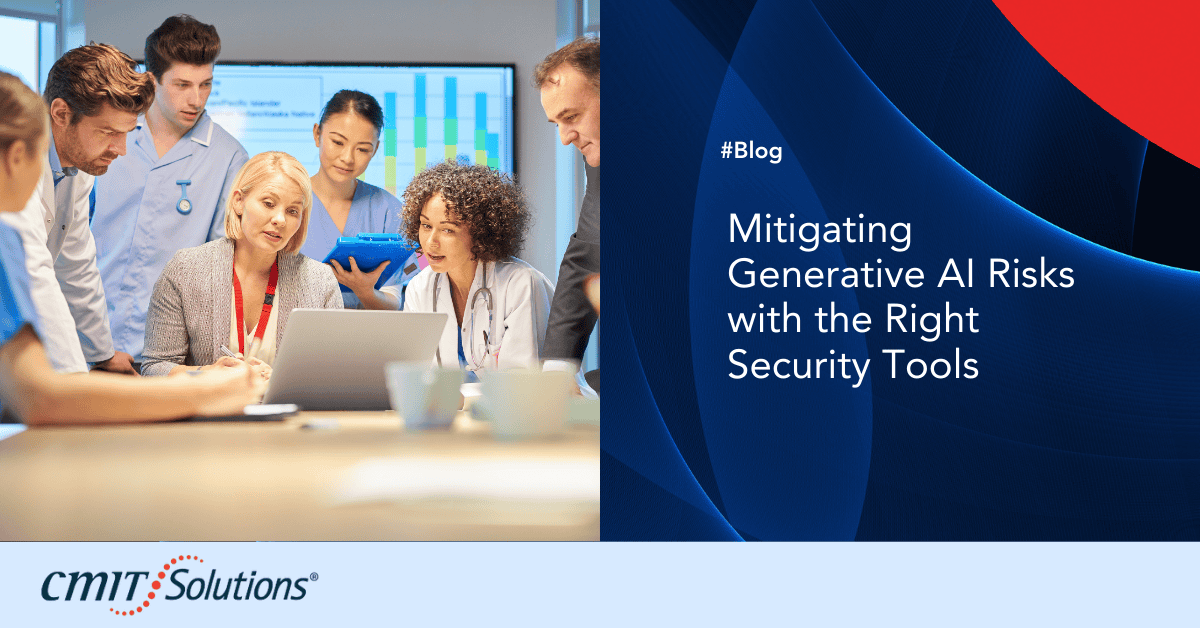Generative AI offers remarkable potential for innovation and efficiency, but it comes with risks that organizations must address. One of the most pressing concerns is the exposure of sensitive data. Research reveals that a significant percentage of employees unknowingly enter confidential information into generative AI prompts, increasing the risk of data breaches. With up to 55% of data loss incidents linked to AI tools, businesses must find a balance between leveraging AI and safeguarding critical information.
This guide explores how organizations can mitigate these risks through robust security tools such as cloud access security brokers (CASBs) and data loss prevention (DLP) solutions. By implementing the right strategies, companies can unlock the potential of generative AI while maintaining strict compliance and data protection standards.
Learn how cybersecurity solutions can simplify risk management.
The Challenges of Generative AI in Business Environments
Key Risks:
- Data Exposure: Sensitive information may inadvertently be entered into AI prompts, putting organizations at risk of data leaks.
- Compliance Violations: Improper handling of confidential data can breach privacy laws and industry-specific regulations.
- Shadow IT Use: Employees may use unsanctioned generative AI tools without IT oversight, increasing exposure to security vulnerabilities.
To address these challenges, organizations need a combination of robust policies, employee training, and advanced security tools.
Boost productivity with secure IT applications.
Using CASBs for Secure Generative AI Adoption
What is a CASB?
A cloud access security broker (CASB) acts as an intermediary between an organization’s IT environment and cloud applications. It provides visibility into cloud usage, enforces security policies, and controls access to cloud resources.
Benefits of CASBs:
- Monitoring Generative AI Use: CASBs help detect unauthorized generative AI usage, ensuring employees comply with organizational policies.
- Granular Access Control: Instead of banning AI outright, CASBs allow organizations to permit specific user groups to access AI tools securely.
- Shadow IT Mitigation: These tools identify and manage unsanctioned applications, minimizing security gaps.
Explore how cloud solutions enhance security and scalability.
Leveraging DLP to Prevent Data Exposure
How DLP Works:
Data loss prevention (DLP) tools protect sensitive information by monitoring, detecting, and managing data across an organization’s IT infrastructure. They classify sensitive data and enforce policies to prevent its misuse.
Key Features of DLP Solutions:
- Data Classification: Identifies sensitive information such as financial records, intellectual property, and personally identifiable information.
- Policy Enforcement: Prevents users from sharing sensitive data in generative AI prompts or other unauthorized methods.
- Automated Alerts: Provides real-time feedback to users, explaining the risks of improper data handling.
DLP complements CASBs by focusing on sanctioned applications and internal processes, ensuring comprehensive protection across the organization.
See how IT strategies support data security.
The Power of Combining CASBs and DLP
While CASBs and DLP tools each play unique roles, combining them provides a holistic approach to managing generative AI risks.
- CASBs focus on cloud application usage, ensuring that unsanctioned tools don’t create vulnerabilities.
- DLP secures data within sanctioned applications, whether on-premises or in the cloud, by enforcing strict data-handling policies.
Together, these tools enable organizations to leverage generative AI’s capabilities while maintaining tight control over data security.
Contact us to learn more about implementing these solutions.
Building a Secure Framework for Generative AI
To maximize the benefits of generative AI, organizations need a structured framework that includes:
1. Policy Development and Training
Establish clear guidelines for AI use and educate employees about the risks of entering sensitive information into AI tools. Regular training ensures employees remain aware of best practices.
2. Advanced Security Tools
Deploy CASBs and DLP solutions to monitor activity, enforce data policies, and prevent unauthorized access. These tools ensure a secure environment for generative AI adoption.
3. Continuous Monitoring
Regularly review AI usage patterns and update security protocols to adapt to emerging threats.
Discover how tailored IT solutions can enhance your security posture.
Conclusion: Balancing Innovation with Security
Generative AI has the potential to revolutionize business processes, but it must be used responsibly. With up to 55% of data loss incidents linked to AI tools, organizations can’t afford to ignore the risks. By implementing CASBs and DLP solutions alongside robust policies and employee training, businesses can safely integrate generative AI into their workflows.
Taking a proactive approach not only safeguards sensitive data but also empowers organizations to fully leverage AI’s transformative capabilities. With the right strategy, businesses can achieve the perfect balance between innovation and security.
Ready to secure your generative AI strategy? Let’s discuss your needs today.




